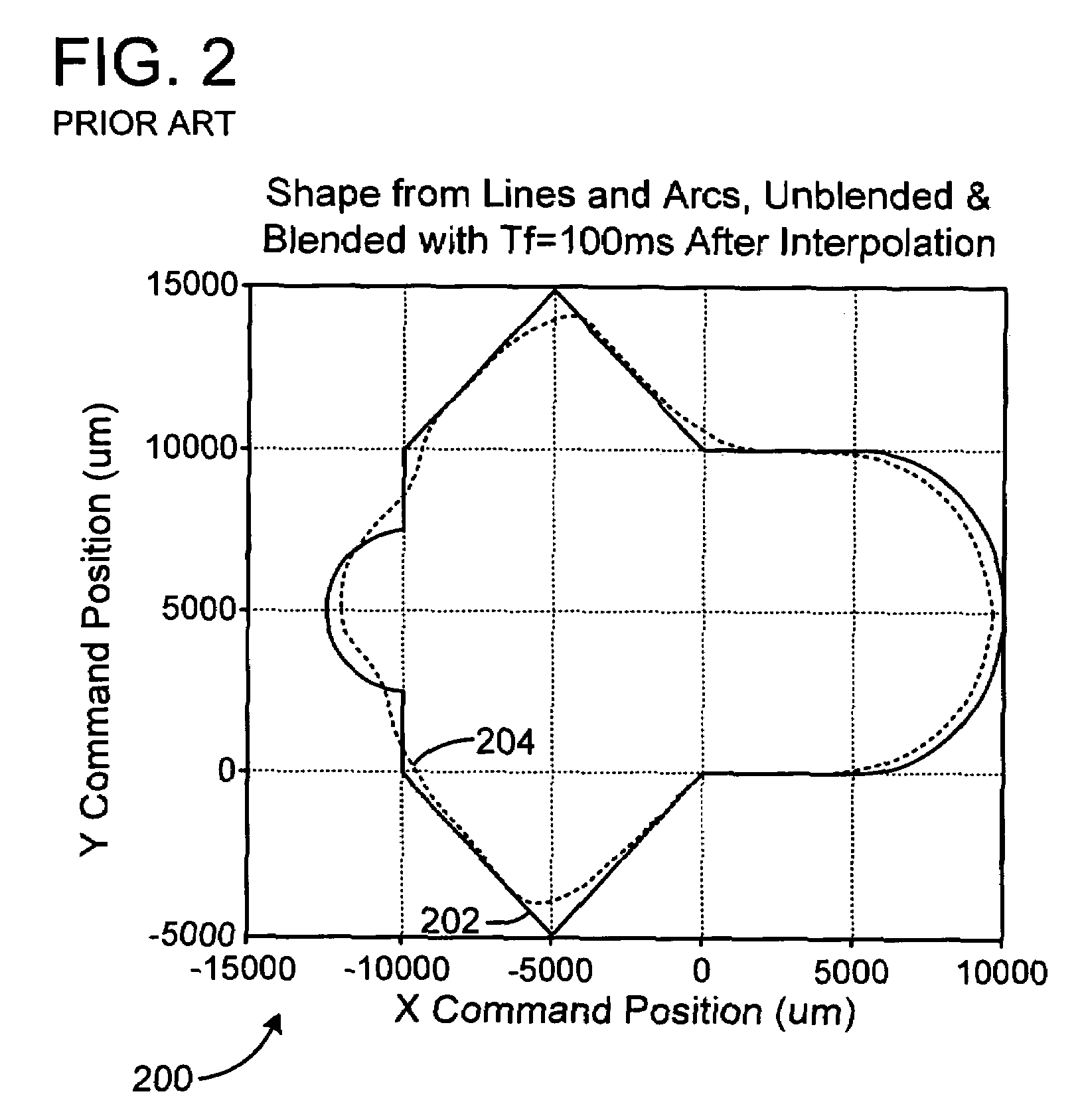Motorized system and method of control
a motorized system and control method technology, applied in the direction of program control, electric programme control, instruments, etc., can solve the problems of increasing the speed and/or accuracy requirements of higher speed and/or accuracy, affecting the accuracy of generated commanded path matching the desired path description, and other undesirable effects, so as to reduce the acceleration rate
- Summary
- Abstract
- Description
- Claims
- Application Information
AI Technical Summary
Benefits of technology
Problems solved by technology
Method used
Image
Examples
Embodiment Construction
[0024]A preferred embodiment of the invention incorporates a multiple-step process to generate a commanded path or trajectory with the desired properties from basic move descriptions, which are essentially defined by the nominally desired path to be followed by the tool. The term path is used to encompass both multi-dimensional and single dimensional patterns of motion or trajectorys.
[0025]As shown in FIG. 8, the first step 710 reads a move description of each commanded move of the tool-tip relative to the workpiece and generates equations of motion for each axis consistent with the description. In CNC machining, moves are commonly described in RS-274 “G-codes”, but many other methods are possible.
[0026]The second step 712 solves these equations at successive time intervals that are greater than the final setpoint-generation interval. This step is called “coarse interpolation”. Each generated point has a location, velocity, acceleration, and higher derivative properties. Feedrate ov...
PUM
 Login to View More
Login to View More Abstract
Description
Claims
Application Information
 Login to View More
Login to View More - R&D
- Intellectual Property
- Life Sciences
- Materials
- Tech Scout
- Unparalleled Data Quality
- Higher Quality Content
- 60% Fewer Hallucinations
Browse by: Latest US Patents, China's latest patents, Technical Efficacy Thesaurus, Application Domain, Technology Topic, Popular Technical Reports.
© 2025 PatSnap. All rights reserved.Legal|Privacy policy|Modern Slavery Act Transparency Statement|Sitemap|About US| Contact US: help@patsnap.com



